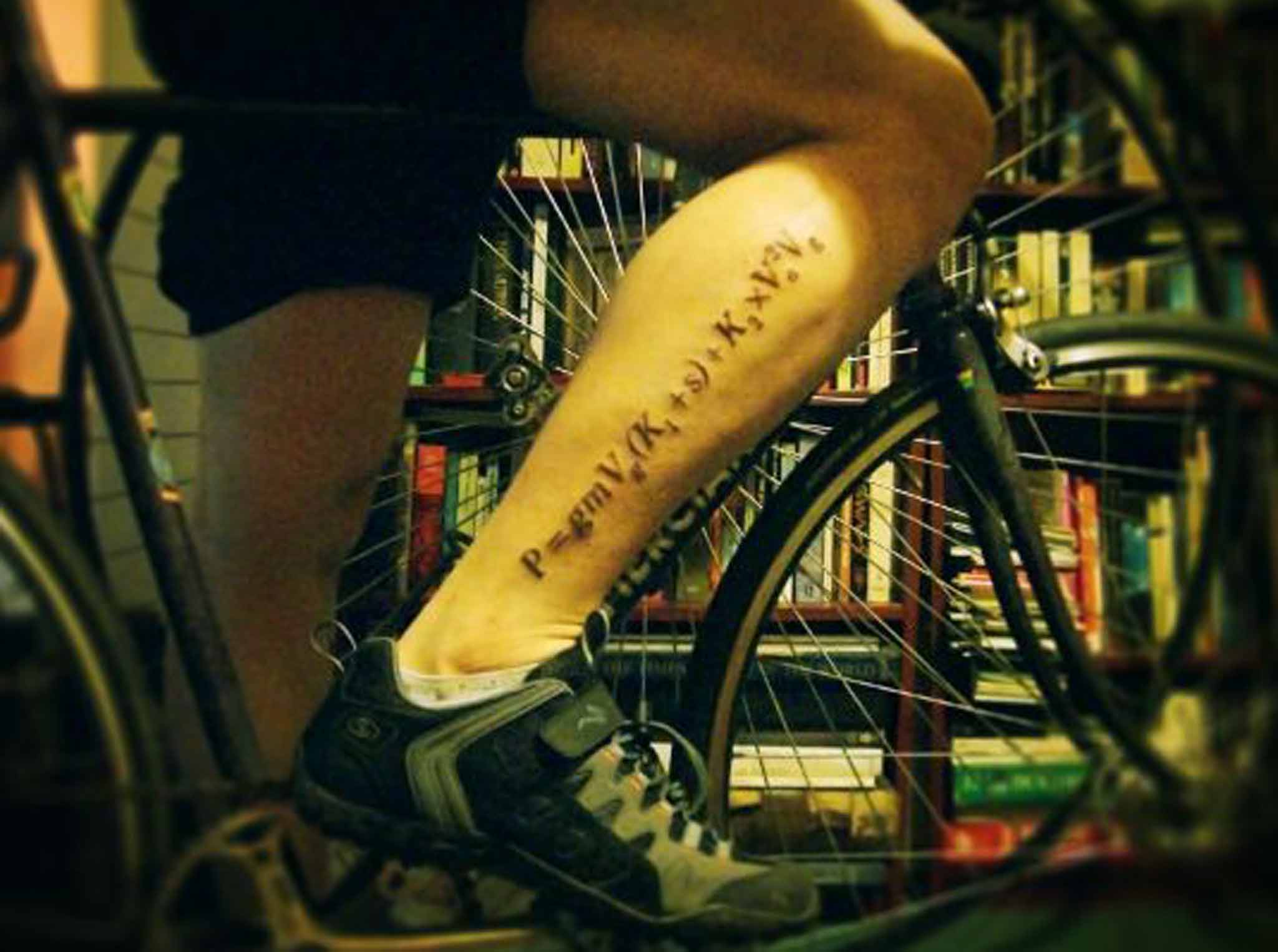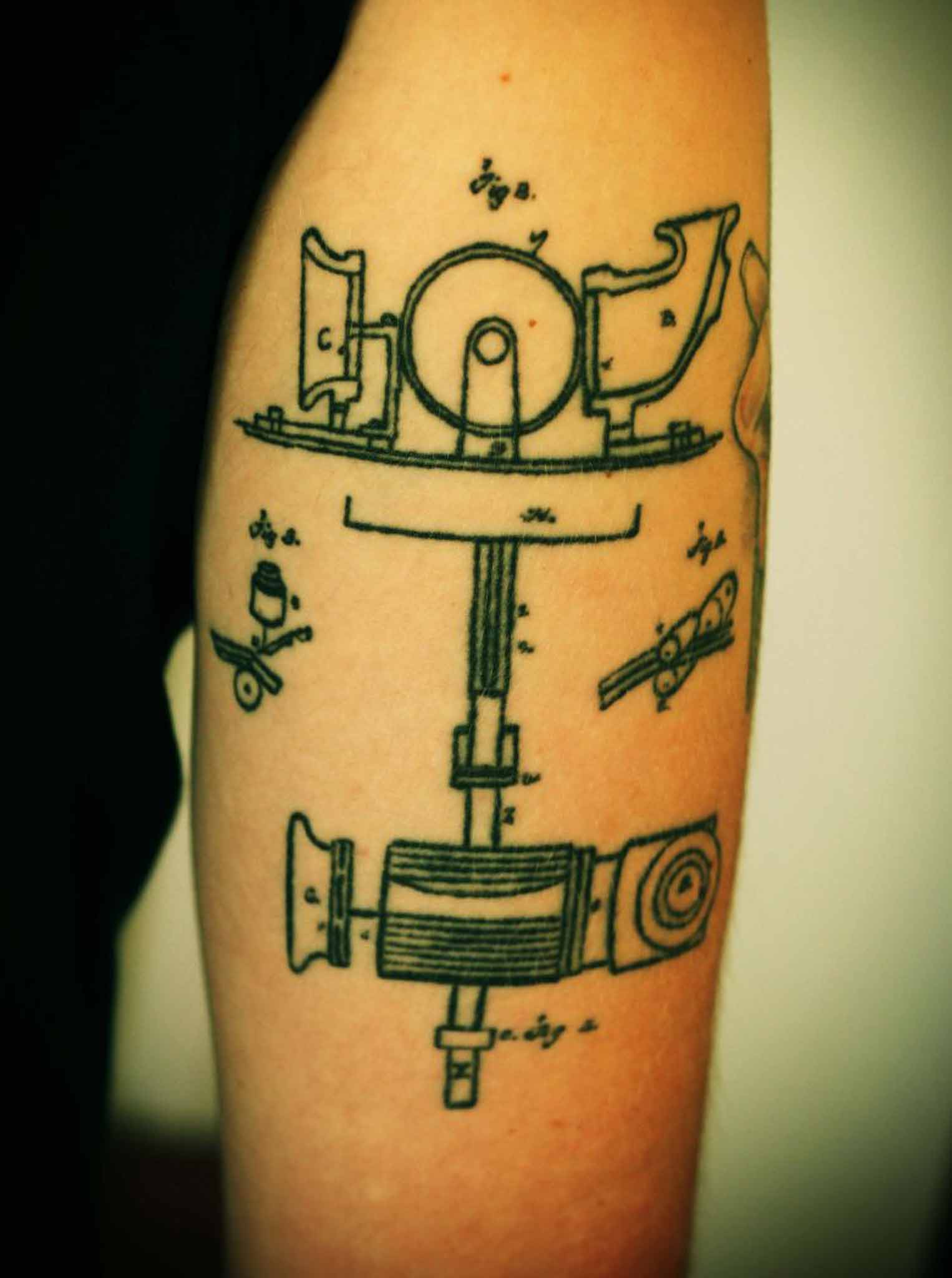Scientists' tattoos: The formula for skin ink
A passion for their discipline has led many scientists to have a tattoo of a hard-won formula, or a dinosaur. Nick Duerden looks at a new book dedicated to the niche inky artworks

Your support helps us to tell the story
From reproductive rights to climate change to Big Tech, The Independent is on the ground when the story is developing. Whether it's investigating the financials of Elon Musk's pro-Trump PAC or producing our latest documentary, 'The A Word', which shines a light on the American women fighting for reproductive rights, we know how important it is to parse out the facts from the messaging.
At such a critical moment in US history, we need reporters on the ground. Your donation allows us to keep sending journalists to speak to both sides of the story.
The Independent is trusted by Americans across the entire political spectrum. And unlike many other quality news outlets, we choose not to lock Americans out of our reporting and analysis with paywalls. We believe quality journalism should be available to everyone, paid for by those who can afford it.
Your support makes all the difference.Carl Zimmer, a noted American science writer and lecturer at Yale University, found himself at a pool party a few years back attended almost exclusively by scientists. Instead of promptly fleeing, he fell into conversation with one after noticing something he hadn’t expected to see: a tattoo on the man’s forearm.
“It was of DNA,” Zimmer explains, “and to me this was interesting because it showed me a side to scientists I didn’t necessarily know about.”
His interest duly piqued, Zimmer took a photograph of it and posted it onto his blog, then asked his blog’s many readers if there were any other scientists out there also concealing skin ink related to their profession. There came a deluge, scientists from all over the world only too happy to share their hitherto largely hidden passions. “It’s as if they couldn’t wait to reveal their secret,” he laughs. There were the neuroscientists with neurons intricately recreated onto their biceps, the biologists with molecules, fish, even remote Hawaiian archipelagos etched across their torsos, and the palaeontologists whose legs had become canvasses for dinosaurs.

Zimmer has collected some of the finest examples in a book, Science Ink: Tattoos of the Science Obsessed, which does everything a good coffee table-cum-toilet book should, crammed as it is full of fascinating photographs that capture the artistry of each alongside helpful text explaining why, for example, Australian biologist Bryan Grieg Fry took his study of venomous sea snakes so seriously that he now has one immortalised on his back alongside the molecular symbol for adrenaline. “Required in abundance,” Zimmer notes, “for his line of research.”
Elsewhere, one Drew Lucas, a postdoctoral researcher at the University of Cape Town, where he studies the flow of the ocean, has a scientific formula inked into his left leg. “It’s the incompressible form of the conservation of mass equation fluid, also known as the continuity equation,” he helpfully explains. “When people ask what it means, I say it defines flow. For an incompressible fluid, the partial derivative of the velocity of the fluid in the three spatial dimensionals must sum to zero. It therefore concisely states the fundamental nature of a fluid.”
Of course it does, Drew. Mercifully, another scientist here, Colm O’Dushlaine, offers comparative light relief when explaining away his tattoo. An Irish research scientist now based at Harvard, he got a double helix immortalised on his right bicep shortly after completing his PhD on the subject.
“I felt I should have something that records my passion for genetics in the same way another one I have, a Celtic knot, records my ancestry,” O’Dushlaine says.
A year later, he was able to show it off to James Watson, the co-discoverer of the structure of DNA. “He was very surprised by it, I think,” he beams.
Like many scientists, O’Dushlaine was initially wary of discussing his ink with fellow scientists. Many of his own generation, he says (he is 34), have no problem with body art, but the older generation still view it as inappropriate for such studious folk. “In which case, it’s often best to wait until you’ve got tenure before you start revealing it to all...”
Zimmer, a big fan of both science and history, became increasingly fascinated during his research by society’s changing attitudes towards tattoos. “When they first came to the West, they were for a long time downright illegal,” he says.
Nowadays, of course, tattoos no longer represent counter-culture societies as they once did. In a world where we inexplicably allow ourselves to be influenced by Premiership footballers, everyone and their mother has some or other cod Sanskrit hieroglyphics about their body that they hope – but never quite can fully confirm – translates into a variation of “peace and love”.
Tattoo artists, it turns out, are no better at spelling than the rest of us. But scientists, says Zimmer, take the whole business very seriously indeed. Research occurs.
“This is not a minor undertaking for them, not something they do at midnight when drunk and wake up the next morning wondering what happened. No, they consider these things for years, and it’s often a major collaboration between scientist and artist to get it just right.” Accuracy, he explains, is critical. “Scientists can be pretty ruthless when it comes to critiquing other science tattoos.”
Seven years ago, a geographer called Marina Islas from the University of Austin, Texas, had a map of the world immortalised across her back. “I was in love with the world,” she says, “and wanted to have it tattooed on my back to honour that love.”
Far from hiding it, Islas often shows it off by wearing backless dresses. “I take pride in my body,” she says. Colleagues are impressed.
“At the Annual Meeting of the Association of Geographers, I often get compliments, and I’ve heard comments such as: ‘That’s dedication!’”
But there is a downside to having such ornate body art on frequent show. “There are times when strangers approach me and touch my back,” Islas admits. “It’s very rude.”
David Beckham presumably suffers similarly.
‘Science Ink: Tattoos of the Science Obsessed’, by Carl Zimmer (Sterling, £12.99)
Join our commenting forum
Join thought-provoking conversations, follow other Independent readers and see their replies
Comments